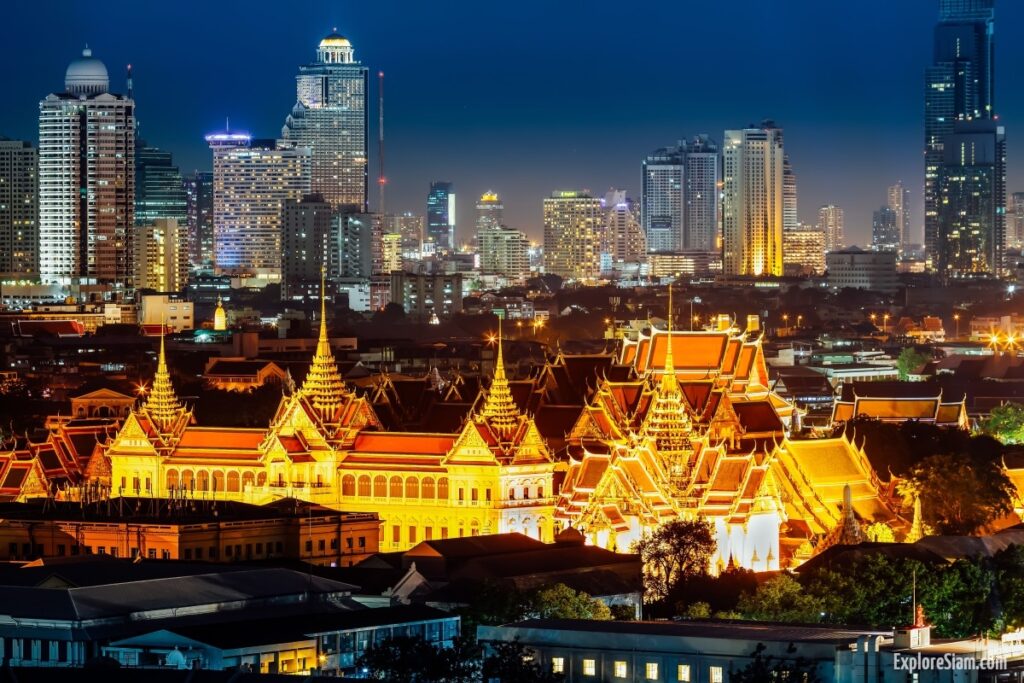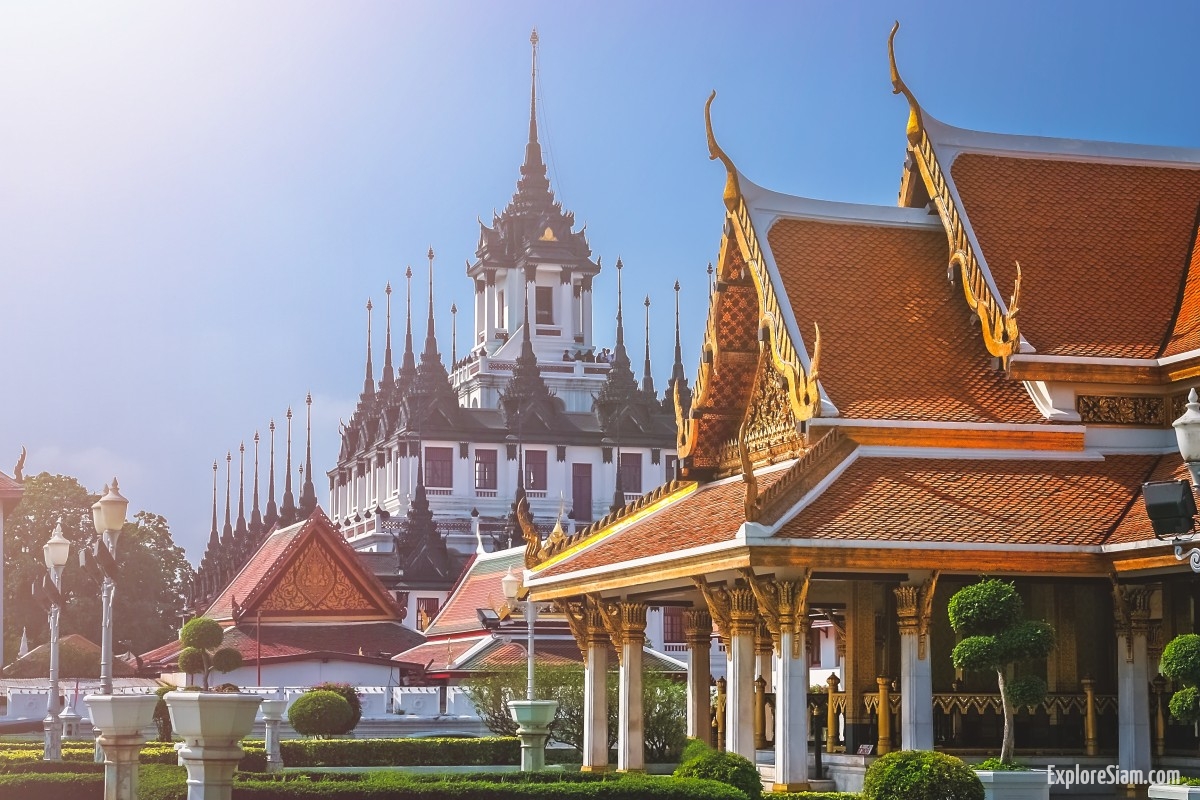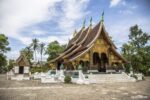Nestled in the heart of Bangkok, Thailand, The Grand Palace stands as a symbol of the country’s rich history, intricate architecture, and vibrant cultural heritage. Since its construction in 1782, the palace has been a pivotal landmark, representing the monarchy’s seat and the administrative power of the Kingdom of Siam. Spanning over 218,000 square meters, The Grand Palace is a complex of buildings, halls, pavilions, lawns, and gardens, reflecting the grandeur and opulence of Thai artistry and craftsmanship.
The Grand Palace’s history is deeply intertwined with the establishment of Bangkok as the capital of Thailand. When King Rama I ascended the throne and moved the capital from Thonburi to Bangkok, he initiated the construction of this magnificent palace to serve as his residence and the center of government. The location was strategically chosen for its proximity to the Chao Phraya River, which provided both a defensive advantage and an essential transportation route. The initial phase of construction saw the creation of the Outer Court, which housed government departments and the Temple of the Emerald Buddha, or Wat Phra Kaew, one of the most sacred Buddhist temples in Thailand.
The architecture of The Grand Palace is a mesmerizing blend of traditional Thai and European influences, showcasing the evolution of design and cultural exchanges over the centuries. The palace complex is divided into several courts, each serving a specific purpose. The Outer Court, located near the entrance, once housed the administrative offices and government departments. Today, it is home to Wat Phra Kaew, which enshrines the Emerald Buddha, a revered icon believed to protect the kingdom.
Moving inward, visitors encounter the Middle Court, which features the most significant buildings of the palace, including the Chakri Maha Prasat Hall and the Phra Maha Monthien Buildings. The Chakri Maha Prasat Hall, completed in 1882, is an architectural marvel that combines traditional Thai craftsmanship with Victorian influences, a testament to the cosmopolitan aspirations of King Rama V. This hall served as the primary reception area for foreign dignitaries and state functions. The Phra Maha Monthien Buildings, on the other hand, are more traditionally Thai in their design and have been the site of numerous coronation ceremonies.

The Inner Court, the most secluded and restricted area of the palace, was the royal family’s private residence. This area was a world unto itself, with its own community of women and children who served the royal family. The Inner Court’s unique social structure and strict regulations highlight the intricate customs and traditions that governed life within the palace walls.
One of the most striking features of The Grand Palace is its extensive use of intricate detailing and vibrant colors. The buildings are adorned with ornate carvings, gilded decorations, and vivid murals depicting scenes from Thai mythology and history. The roofs of the structures are typically tiered and decorated with chofahs, which are finial decorations shaped like the head of a bird or serpent, adding to the ethereal quality of the architecture.
The Temple of the Emerald Buddha, or Wat Phra Kaew, is arguably the most sacred site within The Grand Palace complex. The temple houses the Emerald Buddha, a statue carved from a single block of jade, which is believed to have originated in India. The statue has a storied history, having traveled through various regions before being enshrined in Bangkok. The Emerald Buddha is highly revered, and its attire is changed seasonally by the King of Thailand, marking the beginning of each new season in the Buddhist calendar.
The Grand Palace is not just a historical monument but also a living testament to Thailand’s religious and cultural ethos. The complex hosts various ceremonies and events, reflecting the ongoing significance of the monarchy in contemporary Thai society. Visitors to The Grand Palace are often awestruck by the sheer scale and beauty of the site, which serves as a profound reminder of Thailand’s rich cultural heritage and enduring legacy.
Despite its historical significance, The Grand Palace remains a vibrant part of modern Bangkok. It continues to attract millions of visitors each year, who come to marvel at its architectural splendor and immerse themselves in Thailand’s royal and religious traditions. The palace complex is meticulously maintained, ensuring that future generations can appreciate its beauty and historical importance.
In conclusion, The Grand Palace in Bangkok is more than just a historical site; it is a symbol of Thailand’s enduring cultural heritage, artistic excellence, and religious devotion. Its intricate architecture, rich history, and vibrant cultural significance make it a must-visit destination for anyone seeking to understand the essence of Thailand. As visitors walk through its majestic halls and serene courtyards, they are transported back in time, gaining a deeper appreciation for the grandeur and legacy of the Thai monarchy.
Website: www.royalgrandpalace.th





